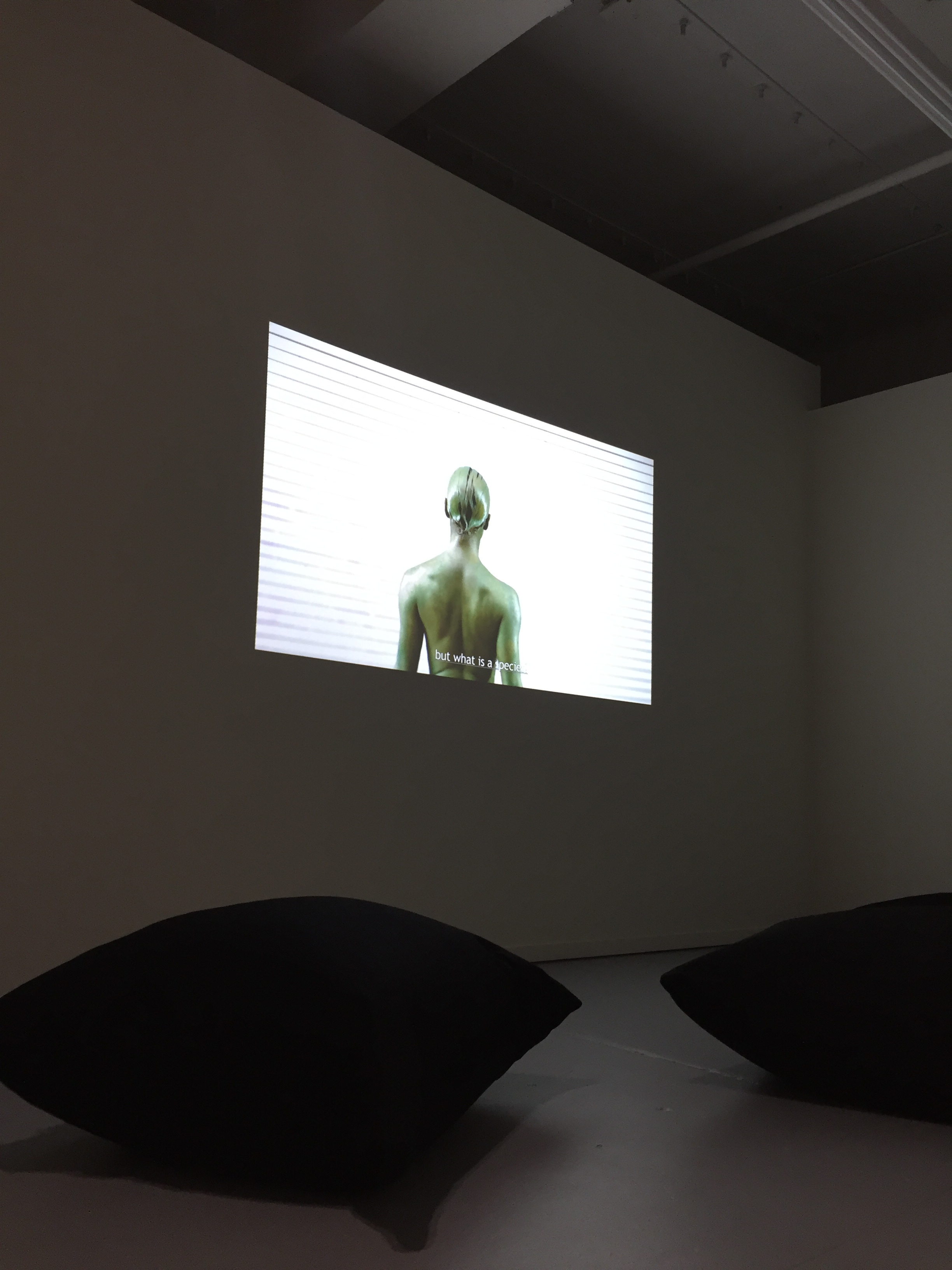With history in a room filled with people with funny names 4, 2017. video, 23:21 minutes . Courtesy of the artist and Clearing Gallery New York. .
With history in a room filled with people with funny names 4 , part of Becoming American
Korakrit Arunanondchai
—
August 2, 2018 - September 30, 2019
Show opening: Thursday, August 2, 2018, 5-10pm
Bangkok-raised, New York-based artist Korakrit Arunanondchai engages a myriad range of subjects from history, authenticity, and self-representation to cultural tourism, transhumanism, political unrest, and the uneasy place of spirituality in a globalized world. Through a lens of a cultural translation and medium hybridity that is both earnest and skilled at parody, Arunanondchai’s immersive installations and videos mine the tensions between technology and animism, painting, a fractured cinematic space, and religion and popular culture, to create a contemporary mythology entirely his own.
Featured within the exhibition Becoming American are new paintings and a solo presentation of Arunanondchai’s video With history in a room filled with people with funny names 4 (2017). The most recent work from an ongoing cycle titled Painting with History in a Room Filled With People with Funny Names, the video’s narrative follows a recurring surrogate character for the artist himself, a Thai denim painter, who plays up and off projections of otherness and difference here. A Chris Marker-like voiceover queries philosophical and poetic observations and is put into dialog with the responses of a drone presence named Chantri, who answers in a soothing sage female French voice inflected with a Thai accent. Existential questions like “who forms the design of death?” and “will you find beauty in this sea of data?”, reinforced by their subtitles, give way to more prosaic inquiries, including “how was your life during the Vietnam war?” or “how was Iran during the revolution?,” intimating that Chantri is perhaps an all-knowing seer of history capable of responding to the chaotic portrait of our current climate, captured and dramatized in the work via a mix of fantastical scenes and documentary-style footage.
Scenes of protest in the United States shot over the past two years appear throughout as if in slow motion and on constant repeat, tracing an incredulity in the face of a new fragility that seems to permeate and haunt everyday American life since the 2016 election. Offset with clips from the massive public funerary rites of King Bhumibol Adulyadej of Thailand, including his cremation, one year following his death at the age of 88 in late October 2016, the artist stitches together what might appear to be far-flung civic moments in order to put them in relief as indicative of an uneasy surreal that is increasingly pervasive worldwide. Public mourning and the framing of authoritarian fallout interweave as major events in the United States and Thailand share a collaged proximity in Arunandonchai’s portrayal of rupture and irrevocable change.
With Chantri’s cautioning yet oracular responses offering an elegiac yet calming tone, a hypnotic backdrop unfolds as performative scenes show a non-gendered futuristic species of green humans taking form as well as tragicomic interactions between a dystopic race of humanoid rats and awestruck humans, as if both visions await us. Declarations of a coming hybridity seem to promise a future in Arunandonchai’s work where “there will be no music in this room only scars left on the face of the planet,” as Chantri intones, and a “new species will rise from underneath these scars with fresh wounds.” Intermixed with a quiet breathing throughout that is equal parts anxious and meditative, the work forces uneasy cultural comparisons throughout as a pristine aerial shot of Thailand’s largest Buddhist temple, Dhammakaya Wat, home to the fastest growing and controversial Thai Buddhist movement (often compared to Scientology), is contrasted with the downtrodden yet ostentatious excess of the Trump Tower in Midtown Manhattan as a crowd of protestors gather.
Against the omnipresence of instant mediation, self-broadcast, and expanded network control that late capitalism touts as our inevitable reward, Arunandonchai morphs transhumanist promise into a schism-laden vision of what’s to come, the twofold hope of a new syncretism alongside a corrosive vision of constant crisis.
Fionn Meade
—
Korakrit Arunanondchai (b. 1986) earned his BFA from the Rhode Island School of Design in 2009 and his MFA from Columbia University in 2012 and attended the Skowhegan School of Painting and Sculpture in 2012. He has had several solo exhibitions at CLEARING gallery in New York and Brussels and has been featured in major group exhibitions at the Sculpture Center and the Fisher Landau Center as well as a solo exhibitions at MoMA PS1, S.M.A.K, Ghent, Palais de Tokyo, Paris, the Johnson Museum of Art, Cornell University, and at J1 in Marseille, France. His work belongs to the collections of The Whitney Museum of American Art, New York, USA; SMAK, Ghent, BE; Museion, Bolzano, IT; Fondation Louis Vuitton, Paris, FR; K11, Hong Kong/Shanghai/Beijing, CN; Fondazione Sandretto Re Rebaudengo, Turin, IT; Aishti Foundation, Beirut, LB; and the Rubell Family Collection, Miami, USA, among others.







